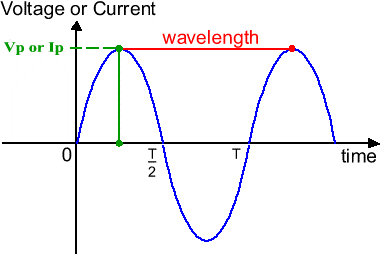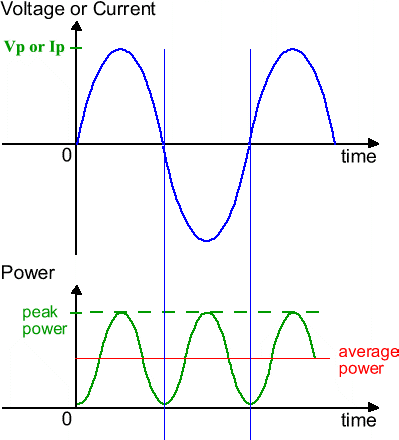| |
|
|
||||||||||||
| |
||||||||||||||
|
|
|
|
|||||||||||
| Physics A - AS Module 3 Alternating Current
The basics
The frequency of an alternating current supply, f, is the number of cycles completed per second. The period, T, of an alternating supply is the time taken to complete one cycle. The peak values of current, Ip, and voltage, Vp, are the ones at the crest or trough on the diagram. They are equivalent to the amplitude of a wave. Average
current, voltage and power So if we look at the power (energy transformed per second) over a period of time, even though it is varying, its average value is greater than zero. In fact the graph looks like this:
As you can see from the graph, the average power is half the peak power. We can use this to calculate what is known as the rms values for current and voltage
RMS Values Power = V I then, obviously, peak power occurs at time of peak voltage and current. Peak power = Vp Ip So, as we’ve said,
and we can say 1/2 Vp.Ip =Vp.Ip/2 = (Vp/root2)(Ip/root2) and hence Average power = (Vp/root2)(Ip/root2) and we can then assume
|
|
|||||||||||||
| |
||||||||||||||
| |
|
|
|
|
||||||||||

